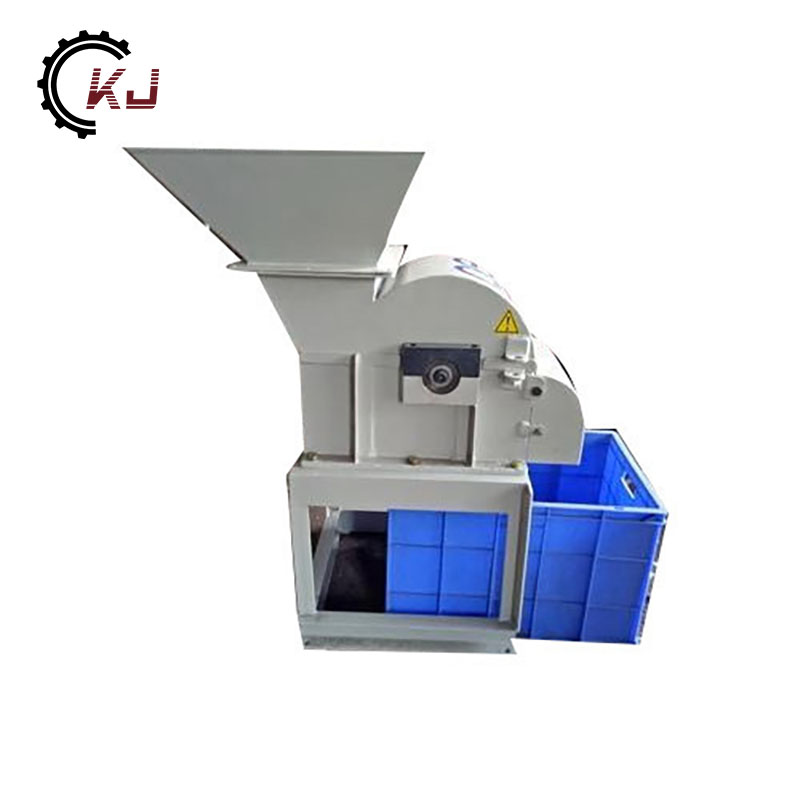Plastic Recycling Machine: A Step Towards a Greener Future
2025-04-17
Plastic has become an integral part of our daily lives, from packaging materials to household products. However, as convenient as plastic is, its environmental impact is undeniable. The accumulation of plastic waste in landfills, oceans, and natural environments has led to severe ecological consequences. In response to this, plastic recycling machines have emerged as a crucial technology in addressing the global plastic waste crisis.
In this blog, we’ll explore what plastic recycling machines are, how they work, and why they are so important for creating a sustainable future.
What is a Plastic Recycling Machine?
A plastic recycling machine is a piece of equipment designed to process used plastic materials and transform them into reusable products. These machines play a key role in the recycling industry by breaking down waste plastic into smaller pieces, which can then be melted, purified, and reformed into new plastic products. Depending on the type of machine, it can handle different types of plastic, such as polyethylene (PE), polypropylene (PP), polyethylene terephthalate (PET), and others.
Recycling plastic not only reduces waste but also conserves resources, as manufacturing new plastic from raw materials consumes significant energy and raw materials. Through plastic recycling, the need for virgin plastic is minimized, contributing to both energy savings and reduced environmental harm.
How Do Plastic Recycling Machines Work?
Plastic recycling machines come in various forms, each with specific functions designed to handle different stages of the recycling process. Let’s look at some of the key components of a plastic recycling machine:
1. Shredding: The first step in recycling plastic involves shredding the plastic waste into smaller, manageable pieces. Shredders are powerful machines that cut large pieces of plastic into smaller bits, which are easier to process in subsequent stages. The smaller plastic pieces are then ready for further treatment.
2. Washing: After shredding, plastic waste often contains impurities like dirt, labels, or residues from food products. A washing system in the recycling machine helps to clean the plastic, removing these contaminants. This ensures that the recycled material is of high quality and suitable for reprocessing.
3. Extruding: The cleaned plastic is then melted and extruded through a machine known as an extruder. This step turns the plastic into a smooth, uniform form that can be reshaped into new products. The molten plastic is typically formed into pellets, which are easier to store and transport before being molded into new items.
4. Pelletizing: Once the plastic has been extruded, it is cooled and cut into small, uniform pellets. These pellets can be used to manufacture new plastic products, from containers to textiles and even automotive parts. The pelletizing process makes it easy for manufacturers to use recycled plastic in their production lines.
Types of Plastic Recycling Machines
There are several different types of plastic recycling machines, each designed to handle specific needs within the recycling process. Some of the common types include:
1. Plastic Shredders: These are machines used for breaking down large plastic items like bottles, containers, and packaging materials into smaller pieces. Shredders are often the first step in the recycling process and can handle a variety of plastic types.
2. Plastic Crusher Machines: Similar to shredders, plastic crushers are used to reduce the size of plastic waste. These machines apply force to break down plastic items into smaller fragments, making them easier to process.
3. Plastic Extrusion Machines: These machines melt and reshape plastic into new forms, such as pellets, sheets, or films. The extrusion process is essential for turning shredded plastic into a usable form for further manufacturing.
4. Plastic Washing Systems: As mentioned earlier, plastic waste often needs to be thoroughly cleaned before recycling. Plastic washing systems consist of various components like high-pressure washers, water tanks, and vibrating screens to remove dirt and debris.
5. Plastic Pelletizing Machines: After the plastic is extruded, pelletizing machines cut the melted plastic into small, consistent pellets, which can be used in the manufacturing of new plastic products. Pelletizing ensures that recycled plastic can be used in mass production.
The Environmental Benefits of Plastic Recycling Machines
The importance of plastic recycling machines extends far beyond just reducing waste. By recycling plastic, we can conserve valuable natural resources, decrease pollution, and reduce energy consumption. Here are some key environmental benefits:
1. Reduction in Landfill Waste: Every year, millions of tons of plastic waste end up in landfills, taking hundreds of years to decompose. Plastic recycling machines help divert these materials from landfills, reducing waste and minimizing the impact on the environment.
2. Conservation of Natural Resources: Manufacturing plastic from raw materials requires extracting petroleum, a non-renewable resource. By recycling plastic, we reduce the need for virgin materials and conserve natural resources, ensuring their availability for future generations.
3. Energy Savings: Recycling plastic uses significantly less energy compared to producing new plastic from raw materials. The energy savings in the recycling process contribute to lower carbon emissions and a reduced environmental footprint.
4. Reduction in Pollution: Plastics, especially single-use items, are a major source of pollution in oceans and other natural environments. By recycling plastic waste, we help decrease the amount of plastic that ends up in our oceans, protecting marine life and ecosystems.
5. Encouraging a Circular Economy: Plastic recycling machines support the concept of a circular economy, where resources are continually reused rather than disposed of after a single use. This model helps reduce waste, promotes sustainability, and encourages the responsible use of resources.
The Future of Plastic Recycling
As awareness of the environmental impact of plastic waste continues to grow, the demand for plastic recycling machines is expected to increase. Technological advancements are continually being made to improve the efficiency and effectiveness of recycling machines, making the process more cost-effective and accessible to both businesses and consumers.
Innovative solutions, such as advanced sorting technologies and chemical recycling methods, are also being explored to recycle more complex plastics that traditional machines struggle with. With these developments, the future of plastic recycling looks promising, and we can look forward to a world where plastic waste is more effectively managed and reused.
Conclusion
Plastic recycling machines are a vital part of the solution to the global plastic waste crisis. By turning waste into reusable materials, these machines help reduce environmental harm, conserve resources, and save energy. As technology continues to evolve, plastic recycling will play an increasingly important role in creating a more sustainable and eco-friendly future. By supporting recycling initiatives and adopting the use of recycled materials, we can all contribute to a cleaner, greener planet.



